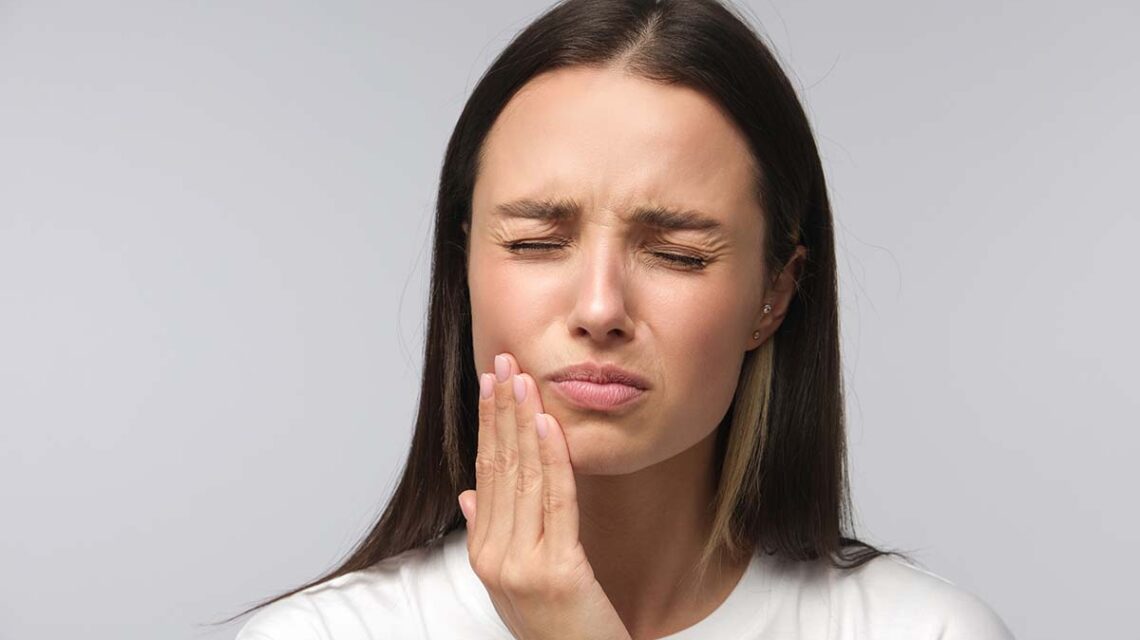Oral and maxillofacial pain can include headaches, deviating jaw movements, and stabbing or burning sensations in the facial area. They can make it harder to talk to other people, drink beverages, and eat food, any of which can substantially degrade your quality of life. The different kinds of pain might be dull, sharp, or constant, and they might get worse when you yawn, chew, or talk. Depending on your pain levels, you might miss sleep and wind up exhausted during your days, and chronic pain puts you at risk of depression and anxiety. Fortunately, there are TMJ specialists who can provide treatment to prevent things from getting worse and help your life get better.
Table of Contents
Dental Issues
Fractured teeth, gum disease, and cavities can all result in oral and maxillofacial pain. Dental bone loss can create an empty tooth socket. Your body might reabsorb bone, in this case, weakening the jawbone. Periodontal disease impacts tissues surrounding and supporting teeth, resulting in bad breath, pain, and gingivitis. Severe cases might make teeth loose enough to fall out.
Dental abscesses result in sharp pain behind your ear or in your cheek. Damaged or infected wisdom teeth can cause difficulty opening your mouth, jaw pain, swelling, and red, tender, swollen, or bleeding gums.
The specific cause of your pain can determine what kind of oral maxillofacial pain treatment you receive. Tooth extractions and root canals have the potential to alleviate pain. In other cases, you might undergo TMJ pain laser treatment or even receive botox for TMJ.
Temporomandibular Joint (TMJ) Disorders
TMJ disorders are frequently associated with headaches and jaw and facial pain. Teeth grinding and jaw misalignment are common in this group of dozens of conditions. The three most common symptoms are pain, restricted mandibular movement, and noises during jaw movement. Most kinds of temporomandibular joint dysfunctions fall into three categories. The first is jaw joint disorders, the second is chewing muscle disorders, and the third is TMD headaches.
Excessive jaw clenching or teeth grinding are symptoms you need to be aware of. These conditions can impact kids and adults, and they happen day and night. Children might improve by themselves over time, but adults might need dental guards to prevent damage to their teeth. Not everyone has noticeable symptoms, but some have headaches, pain, and dental issues.
Jaw misalignment, also called malocclusion, occurs when the lower and upper jaws don’t align properly. This can result in pain, cosmetic issues, sleep apnea, and popping or clicking sounds associated with specific jaw movements.
Sinus Problems
Sinus issues can result in facial pressure and pain. Two specific examples include sinusitis and sinus infections. These issues can result in mucus blockages, swelling, or inflammation. If nasal passages and surrounding tissues get irritated, mucus can accumulate instead of draining normally. That accumulation can result in pain, pressure, and swelling that expands enough to put pressure on sinus nerve endings.
Sinuses are usually full of air, but these structures inside the human face can be irritated by allergies, bacteria, viruses, and infections. When they fill up with fluid, they can result in nasal congestion.
Other Contributing Factors
Other contributing factors can result in oral and maxillofacial pain. Trauma, nerve damage, and oral cancer are all other possibilities. Sleep disorders that might contribute to these kinds of pain include sleep apnea, snoring, clenching, and sleep bruxism. Your healthcare professional might also look into neuropathic pains, missing teeth, surgical complications, involuntary muscle spasms, and migraine headaches as potential problem sources.
Your lifestyle habits might put you at risk of oral and maxillofacial pain. Smoking and tobacco use is a notable risk. Poor posture also doesn’t help. Even when these factors don’t contribute to your pain, they might exacerbate pain already caused by something else.
Diagnosis and Treatment
The diagnostic process for oral and maxillofacial pain emphasizes identifying any underlying causes. A healthcare provider will likely conduct a clinical examination and study the patient’s history while arranging diagnostic testing. The clinical examination might include neurological analysis and physical examination of the head, face, neck, and oral cavity. Specific categories of examination include inspection, percussion, palpation, and auscultation.
Treatment options vary. Lifestyle medications, such as stress management counseling, might prove effective. Medication options can involve short-term use of non-steroidal and anti-inflammatory drugs to combat pain and relax muscles. Physical techniques might range from splint therapy or a bite plate to complicated surgery.
Prevention Strategies
While professional treatment is available, there are many steps you can take to prevent oral and maxillofacial pain. Seek dental care for issues promptly, but maintain effective oral hygiene and incorporate stress management into your daily life. Eat softer foods rather than chewy or crunchy ones, brush twice daily using a soft-bristled brush, and floss once daily. Avoid very hot or cold drinks and foods, as well as acidic or sweet foods, as these can exacerbate tooth pain and sensitivity. Over-the-counter medications, including acetaminophen or NSAIDs, can help manage pain.
Don’t strain your jaw by opening your mouth too widely when yelling, singing, yawning, or chewing. Don’t put pressure on your jaw or stick it out. If you have TMJ pain, sleep on your back rather than your stomach or side. Gentle stretching exercises can make your jaw stronger and more relaxed. Proper posture includes standing up straight and not leaning your head excessively forward. This can prevent jaw misalignment.
Know the Causes; Find the Treatments
When you understand TMJ, you have some idea why your oral or maxillofacial pain might be happening. This knowledge helps you know when to consult a dental professional and how to describe your symptoms. There are many potential causes behind these kinds of pain; some are more common than others. If your pain symptoms are severe, persistent, or both, seek a dental professional for evaluation and treatment options.



